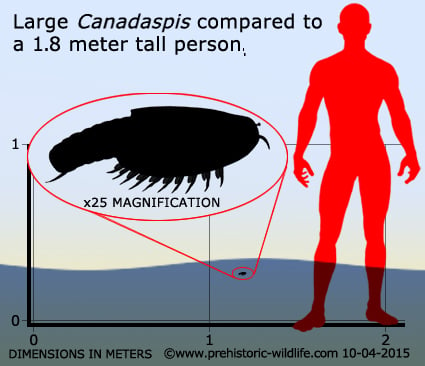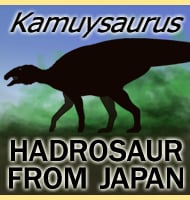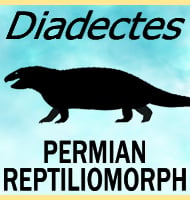In Depth
Canadaspis acquired its name because it was first identified from Canadian deposits and has a large shell referenced as a shield protecting its upper body. Canadaspis also has a number of spines rising up from its upper body that seem to serve the purpose of protection for its eyes. Since its initial discovery Canadaspis has been found to have a large representation in the fossil record. The body layout of Canadaspis indicates that it was not an open water creature but probably spent most if not all of its time on the bottom looking for food.
Canadaspis fed by pushing its biramous appendages (an appendage that forks into two) through sediment. The spines from these appendages would filter the sediment as they moved through it, trapping morsels of organic matter. Canadaspis would then pass this food into its mouth for feeding.
Although initially classed as a crustacean, some researchers think that Canadaspis should actually be classed as a euarthropod. Such a placement would see Canadaspis have a more basal position within the Arthropoda, but the decision to move Canadaspis remains controversial with the majority of sources still placing beneath the Crustacea.
Further Reading
– The morphology, mode of life, and affinities of Canadaspis perfecta (Crustacea: Phyllocarida), Middle Cambrian, Burgess Shale, British Columbia. – Philosophical Transactions of the Royal Soceity of London 281. – D. Briggs – 1978.










